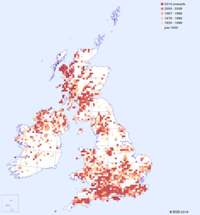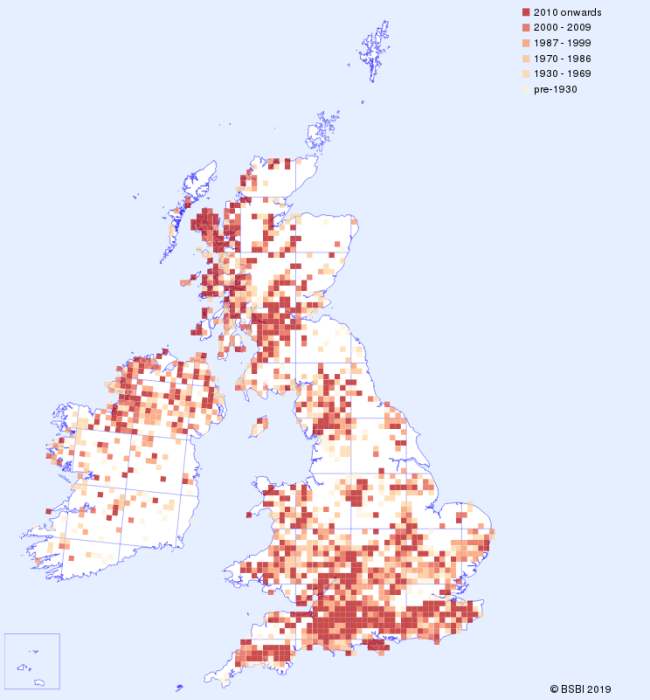Unlike the Lesser Butterfly-orchid which is classified as vulnerable, the Greater Butterfly-orchid is found locally throughout the UK and Ireland although its numbers are in steep decline due to habitat destruction, agricultural pollution and the replacement of ancient woodlands with conifer plantations. Both species flower between late May and early July and can, occasionally, be found flowering together. Superficially the two species are remarkably similar and the easiest way to determine which of the two species you have found is to inspect the pollinia (pollen-bearing structures) at close quarters. In the case of the Lesser Butterfly-orchid the pollinia are parallel, whereas those of the Greater Butterfly-orchid are clearly separated but lean inwards towards the tops. Platanthera chlorantha grows in a number of habitats from open meadows to ancient woodland edges, but generally prefers chalk-based substrates. In Europe the plants can be found from Scandinavia and the Baltic States in the north to the Mediterranean region in the south.
| Distribution Map | Key Features | |
 |
Records for the Greater Butterfly-orchid from BSBI are shown on the map with most recent in front. (Hover the mouse over the small map to expand it.) |
Plant: 20 to 45cm tall, occasionally to 65cm; stem pale green, somewhat triangular and ribbed towards the top. |
Image Gallery for Greater Butterfly-orchid Platanthera chlorantha
| Pollination | Taxonomy & Hybrids |
The Greater Butterfly-orchid is mainly pollinated by night-flying moths of the Noctuid family, and sometimes by Hawkmoths. Vegetative reproduction also occurs but insect pollination is more important. |
The specific name chlorantha means green. The two platanthera species that appear in the UK are genetically very close, suggesting that separation of the two species was relatively recent. |
Articles about Greater Butterfly-orchid in JHOS
